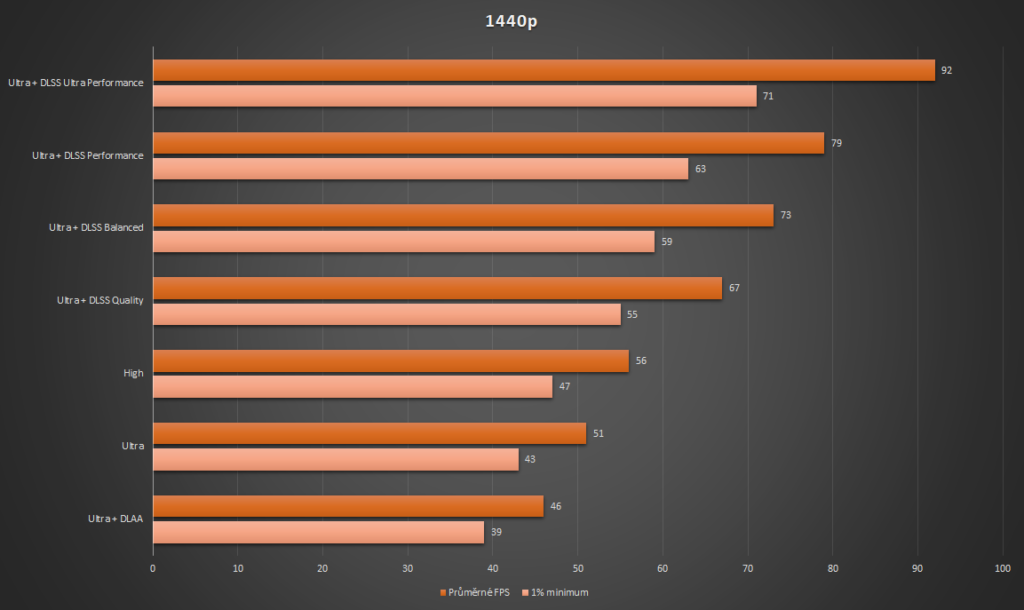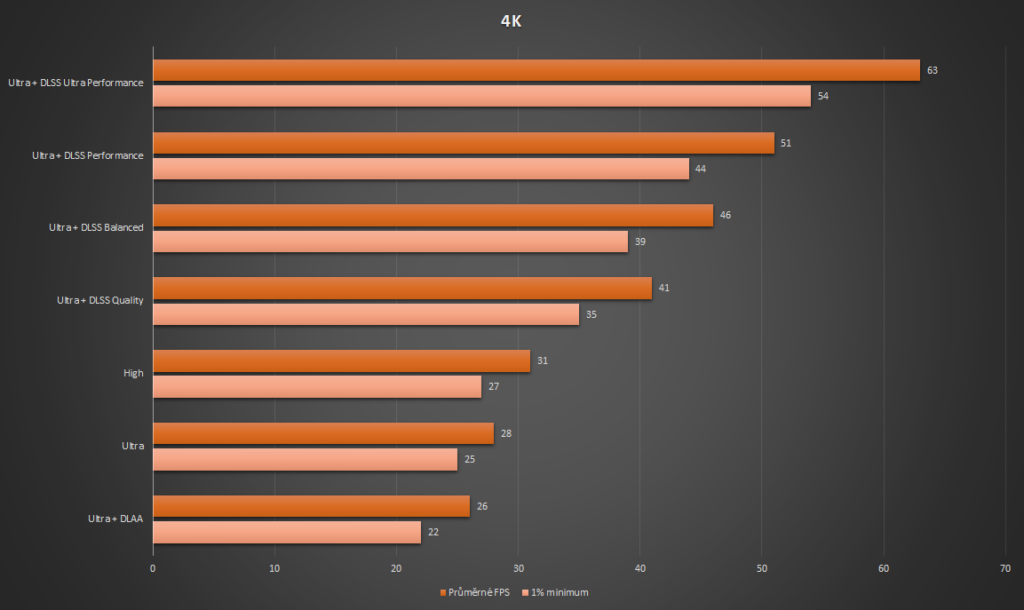Today we’re bringing you the first part of five promotions where we’re testing a LYNX gaming PC with a Ryzen 5 5600 processor, GeForce RTX 3070 graphics card, 16GB DDR4 RAM, and a 1TB NVMe SSD. In the introductory article, we’ll take a look at the recently released adventure game A Plague Tale: Requiem, which gives consoles and computers quite a lot of work, even without the ray tracing that the developers promised but still haven’t received. We tested the game at the three most common resolutions (1080p, 1440p and 4K) with different quality settings to see how LYNX handles it. As a test location, we chose a complete introduction to the game, which is quite representative of everything else.
First we’ll take a look at Full HD resolution, which is still very popular and, given the complexity of the game, is basically ideal. On ultra settings (i.e. really everything at max) you can expect an average of 69 fps and a 1% minimum of 56 fps (this is the value that indicates the worst 1%, in other words, 99% of the time the game will run better for you). Also worth mentioning is the inclusion of DLAA, that is, image smoothing using artificial intelligence (essentially DLSS without upscaling). You won’t lose a lot of FPS and the better image quality is definitely noticeable. On the contrary, you can achieve an increase in FPS in the traditional way, of course, lowering the quality to High, so you will achieve a better average of 10 frames per second.
But I think the best solution would be to use DLSS technology. In quality mode with ultra settings, you get an average of 87 frames per second, which is a big jump. In the table you can see the results with the other DLSS presets where the scaling continues in an essentially linear fashion all the way up to Ultra Performance where the FPS increases significantly but the loss in image quality is already really significant.
1440p is arguably the most popular resolution among PC gamers, as it’s kind of the middle ground between Full HD and 4K. It must be said that with Ultra or High quality settings you won’t reach the magical 60 FPS limit. Here again, DLSS comes to the rescue, because even when using the Quality mode with the Ultra setting, the average frames per second rises to 67. With other presets, you can get significantly more.
4K is already the demand for the RTX 3070 in this game. On Ultra, the average FPS is below 30, on High it is slightly higher. Again, DLSS will help a lot here, where you can expect similar performance to newer consoles (where the game is 1440p oriented, of course). The 60 fps limit can only be reached with DLSS Ultra Performance, where the quality loss is already very noticeable, and I personally cannot recommend this mode even at such a high resolution.
In general, given the complexity of the game, these are very good results. Especially in 1080p and 1440p resolution, you can play A Plague Tale: Requiem on LYNX gaming PC with really stable frame rate. Also, depending on your preferences, you can enable either DLSS to increase FPS or DLAA to increase image quality. It really is everyone’s choice.
You can expect the next gaming test next week.
Source :Indian TV

